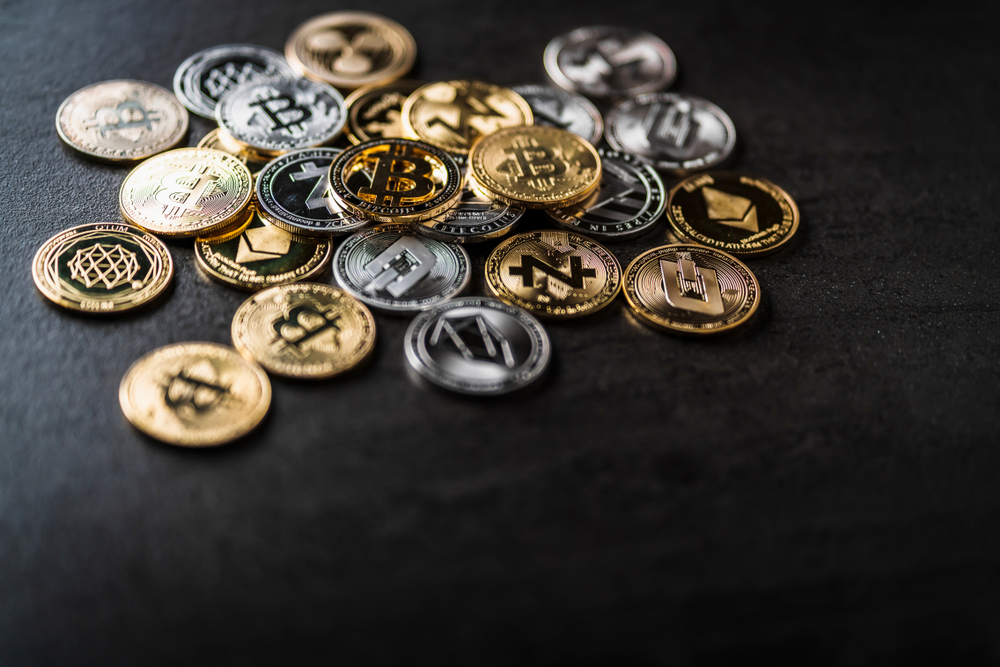Introduction
As a result of complicated language and concepts in the cryptocurrency industry, the phrases “coins” and “tokens” are often confused with one another and thought to refer to the same thing. Despite the fact that they are both units of cryptocurrency, “coins” and “tokens” are indeed two distinct things with two entirely different uses and applications.
This guide seeks to clear up the complex ideas that underpin these two critical crypto concepts by offering an explanation of the traits that distinguish them from one another and by presenting some instances of each.
This article will also talk about a few similarities between them and their respective applications. You will be able to differentiate between a token and a coin in the context of cryptocurrencies by the time you have finished reading this article in its entirety. So keep reading.
Before we begin comparing the two terms, let us first understand what these two things are and how they work individually.
What is a Coin?
A cryptocurrency that functions on its own blockchain network is referred to as a “coin.” One of the primary functions of a coin is to function as a means of exchange, much in the same way that conventional fiat currencies such as the dollar or the Euro do. Coins, on the other hand, are not under the jurisdiction of any centralized authority, such as a bank or other financial institution, since they are a decentralized form of currency.
The most well-known example of a coin is Bitcoin, which was introduced into circulation in 2009 and has since grown to become the cryptocurrency market capitalization leader in terms of size and value. Litecoin, Bitcoin Cash, and Ripple are a few more examples of currency that are now in circulation.
Coins are governed by their own unique set of laws, protocols, and algorithms, which determine how they may be used and how they function. For instance, the regulations of the Bitcoin network state that there can never be more than 21 million Bitcoins in circulation, and the pace at which new currencies are produced is controlled by a process that is referred to as mining.
Coins may be bought and sold on exchanges that deal in cryptocurrencies, and their value is based on the supply and demand dynamics of the market. The value of coins may be very unstable and can change drastically in a short amount of time in reaction to changes in market circumstances or happenings in the news.
Coins, despite their high degree of volatility, are becoming an increasingly popular investment alternative. This is due to the fact that in addition to the possibility of significant profits, coins also provide better accessibility and security than more conventional forms of financial investment.
Bitcoin is the digital coin that has garnered the greatest attention and acceptance from people all around the globe. It was first introduced into circulation in 2009 by an unknown person or group going by the name Satoshi Nakamoto, and because of its head start, it has grown to become the most valuable cryptocurrency.
Ethereum (ETH), which is more than simply digital money, is another cryptocurrency coin that has gained a lot of popularity recently. As a result of the use of smart contracts, it has become the central pillar of the blockchain revolution and the hosting platform for hundreds of blockchain projects and NFTs.
Cardano (ADA) is another decentralized and open-source blockchain platform that gained a reputation as an ecologically friendly cryptocurrency. It was among the first to adopt a Proof of Stake consensus, which contributed to its rise to prominence. In 2015, it was first established by Ethereum.
What is a Token?
When discussing cryptocurrencies, the term “token” refers to a digital asset that works on top of an existing blockchain network and serves as a representation of a certain product or function. Tokens have a more specific use case than coins, which are designed to function as a medium of exchange.
For example, tokens can represent a security, a commodity, a virtual good, or a unit of membership in a decentralized organization. Coins, on the other hand, are designed to function as a medium of exchange.
Tokens are generated and maintained using a technology known as smart contracts, which enables the automated execution of certain activities depending on the fulfillment of certain predetermined criteria.
For instance, a token could be designed to stand in for a share of ownership in a decentralized autonomous organization (DAO), and the corresponding smart contract could stipulate that owners of the token have the right to cast a vote on significant issues and are entitled to a portion of the profits made by the DAO.
Tokens may be sold on cryptocurrency exchanges, and their value is likewise determined by the supply and demand dynamics of the market.
Tokens can be used to pay for goods and services. Because the value of tokens is often tied to the achievement and widespread acceptance of the underlying project or platform, the value of tokens may be very unpredictable. Tokens may take many forms, such as the ERC-20 tokens that run on the Ethereum blockchain and the Binance Coin (BNB) that is used to pay transaction fees on the Binance exchange.
Both of these are examples of tokens. In general, tokens are adaptable digital assets that have the capacity to represent a wide variety of assets and services. Furthermore, tokens in the cryptocurrency ecosystem provide greater flexibility and usefulness than coins do.
In the realm of cryptocurrencies, crypto tokens stand out due to their unique combination of a number of important characteristics. Programmability, permissionless ness, trustlessness, and transparency are also included among these qualities. Because they are programmable, the tokens operate on software protocols that are made up of smart contracts that specify the features, functions, and rules of the network.
These smart contracts are what give the tokens their programmability. The term “permissionless” refers to the fact that anybody may use the system without the need for prior approval from an administrator. The term “trustless” refers to a system in which there is no centralized authority that controls it; rather, the system functions according to rules that have been specified by the network protocol.
Transparency guarantees that the rules of the protocol as well as the transactions themselves, may be accessed by everyone and verified by anyone.
Similar to cryptocurrencies, crypto tokens have the ability to store value and may be exchanged. However, they may also be used to symbolize actual assets, digital assets, or even a particular service or utility.
This is yet another use for them. For instance, there are crypto tokens that represent a piece of artwork or a piece of real estate, in addition to crypto tokens that represent intangible goods such as computational power or data storage space.
Tokens are also often employed as a mode of governance for the purpose of voting on a variety of factors, such as protocol updates, that decide the path that blockchain projects will take in the foreseeable future. Tokenization refers to the process of creating crypto tokens for use in the aforementioned applications.
Tokens may be divided into four separate categories: security tokens, equity tokens, utility tokens, and payment tokens. Coins, on the other hand, do not clearly differentiate between different types.
Security Tokens
The term “security token” refers to a broad category that encompasses a great number of the tokens distributed during initial coin offers (ICOs). They do not fulfill a particular function, and as a result, there is a greater possibility that they will be subject to regulation.
Equity Tokens
These are tokens that reflect a certain amount of stock or equity in a corporation. Equity tokens are a kind of digital asset. Due to the lack of clarification about the applicable regulations, only a small number of businesses have chosen to conduct initial coin offerings (ICOs) of this sort.
Utility Tokens
Users may get access to goods or services by using utility tokens, also known as application tokens.
Payment Tokens
Payment tokens are used only for the purpose of making purchases of various products and services. It’s possible for a token to belong to more than one category, such as when a utility token and a security token share the same set of capabilities.
In the context of cryptocurrencies, the phrases “token” and “coin” are often used interchangeably, despite the fact that these terms really refer to separate things. Anyone who is interested in investing in digital currencies or utilizing them should make it a priority to educate themselves on the distinctions between the two.
What are the Differences Between Tokens and Coins?
A cryptocurrency that runs on its own individual blockchain is known as a coin. For instance, the cryptocurrency Bitcoin is a coin. The blockchain that underpins Bitcoin was designed with the sole intent of serving as a storage medium for digital currency.
Coins are governed by their own unique set of laws, protocols, and algorithms, which determine how they may be used and how they function. Tokens, on the other hand, are a subcategory of cryptocurrencies that are designed to function on top of already existing blockchains.
A great number of tokens are constructed on Ethereum’s blockchain. Tokens do not have their own blockchain; rather, they are dependent on the infrastructure that is given by the blockchain that they are associated with.
The function that is served is a primary distinction between tokens and coins. Tokens are sometimes developed for the purpose of representing a particular asset or service inside a decentralized application. This is one common use case for tokens (dApp).
For instance, a token may be used to represent a particular kind of asset, like a stake in a corporation, or it could be used to get access to certain features or services included inside a decentralized application (dApp). On the other hand, coins are often produced as a type of money that may be used for transactions and as a store of value. Coins have been around for centuries.
The most important functions that coins are designed to fulfill are those of a medium of exchange and a means of transferring value from one person to another.
One other distinction between tokens and coins is the manner in which they are issued and dispersed. Tokens may be generated via a process that is known as an Initial Coin Offering, or ICO for short. During this process, a new token is offered to investors in exchange for already existing cryptocurrencies like Ethereum or Bitcoin.
Coins, on the other hand, are often produced via a process known as mining. This is a process in which new coins are generated by a decentralized consensus mechanism. Mining is normally done using specialized software.
In addition, the value of coins is based on their function as a means of exchange, but the value of tokens is often tied to the development of the underlying project or platform and how well it is received by the public.
As a result, the value of tokens may be more erratic and vulnerable to more significant swings than the value of currencies. Tokens, nevertheless, provide a wider range of functionality than coins do, including the ability to represent a security, a commodity, or a unit of membership in a decentralized organization.
Coins, on the other hand, provide only the most fundamental of capabilities, such as the ability to function as a medium of exchange. Through the use of smart contract technology, tokens may also be programmed to automatically carry out certain tasks depending on the satisfaction of certain predetermined criteria.
In general, these distinctions underline the fact that coins and tokens perform distinct functions within the realm of cryptocurrencies and that they provide users with a unique set of advantages and difficulties. Tokens provide more versatility and utility than coins do when it comes to representing a wide variety of assets and services. Coins, on the other hand, are meant to serve as a fundamental means of exchange.
What are the Major Similarities Between Tokens and Coins?
Despite their obvious distinctions, coins, and tokens used in cryptocurrencies have a number of commonalities, including the following:
Digital Nature
Tokens and coins are both examples of digital currencies; they are completely independent of the physical world and can only be found in digital wallets. They are not concrete and rather digital in form; you can’t touch or feel them. All you can do is work with them online.
Decentralization
Tokens and coins, both types of cryptocurrency, are considered to be decentralized, which means that they are not governed by a single governing body or government. Financial transactions may now benefit from increased transparency, security, and accessibility as a result of this decentralized nature.
The Use of Blockchain Technology
Tokens and coins depend on blockchain technology, which offers a secure and transparent record of transactions. Blockchain technology is used by both, so that is another similarity between these assets.
Safe and Quick Financial Dealings
Tokens and coins, both of which are verified and encrypted by a distributed network of computers, provide for safe and convenient financial dealings.
Liquidity
Both tokens and coins have a high level of liquidity and can be readily exchanged for other cryptocurrencies or for fiat currencies like the US dollar or the Euro. Liquidity is a key feature of cryptocurrencies in general.
Volatility
The value of coins and tokens may be very volatile because of the quick price changes that might occur in reaction to changes in market circumstances or to the release of new information.
Tokens and coins in cryptocurrency are essentially the same things when taken into consideration as a whole because of their digital nature, their dependence on blockchain technology, and their capacity to facilitate safe, swift, and liquid transactions.
Coins vs. Tokens: Which one is Better?
The answer to the issue of whether coins or tokens are superior is highly subjective and relies on the specific requirements and preferences of each individual user. Coins and tokens each come with their own set of benefits and drawbacks that are exclusive to them.
Nevertheless, it is important to note that while the phrases “token” and “coin” are often used synonymously in the realm of cryptocurrencies, these terms really refer to separate things. Tokens are often developed for a particular use case and are programmed to run on top of an existing blockchain.
Coins, on the other hand, are designed to function as a form of money and are programmed to operate on their own blockchain. Anyone who is interested in utilizing digital currencies or investing in them should make it a priority to familiarise themselves with the distinctions between tokens and coins.
In the end, the decision between coins and tokens in cryptocurrency will rely not only on individual tastes and requirements but also on the particular use case and investment plan that is being implemented. Before deciding to make an investment, users should give serious consideration to the aforementioned aspects since both coins and tokens come with their own set of distinct benefits and drawbacks.






























